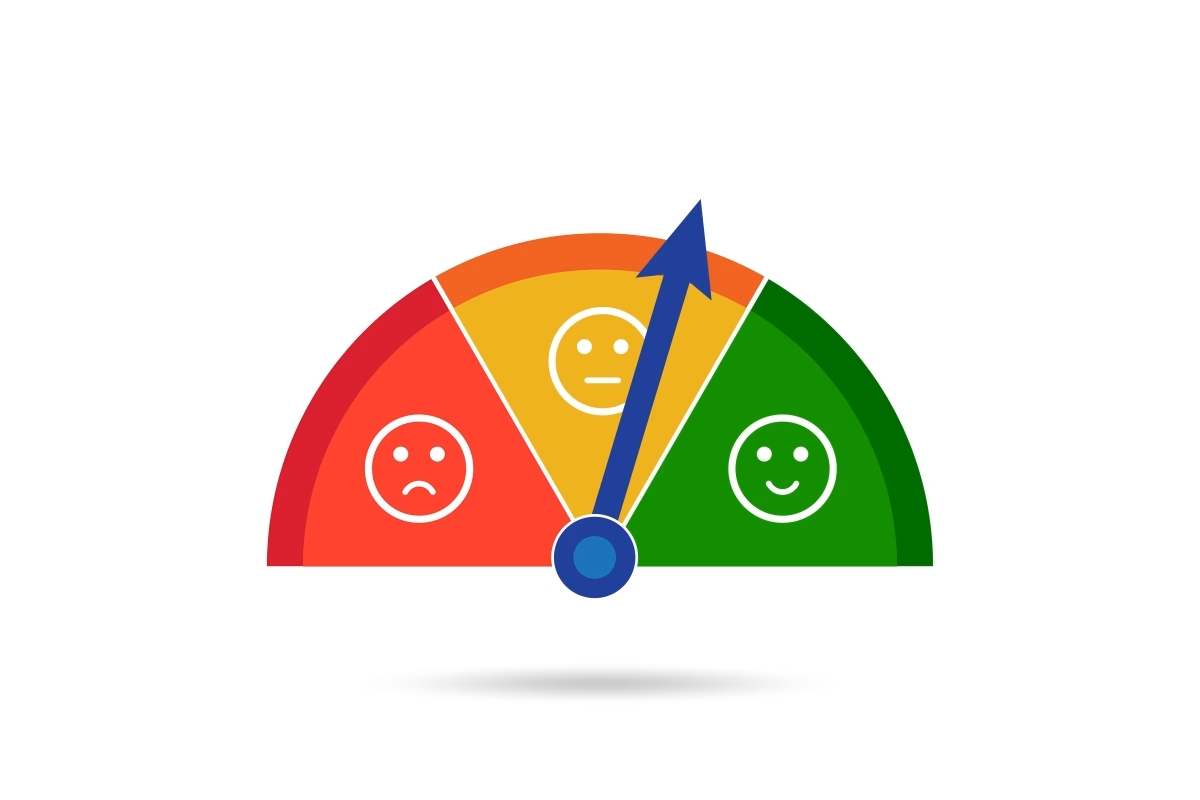Discover why relying solely on dial testing falls short in media testing. Learn how to enhance your results by incorporating additional testing methods for a more comprehensive approach. Elevate your media testing strategy by combining dial testing with other effective methodologies to achieve superior outcomes.
Table of Contents
For decades, dial testing has been a staple in media research. The method, which, simply put, asks participants to turn a physical dial to express their feelings in real-time, has long been trusted to capture audience sentiment during ad testing, TV pilots, and film screenings.
Dial testing continues to offer valuable insights – but in the modern media landscape where success increasingly depends on understanding both conscious reactions and unconscious engagement, researchers can achieve even better results by combining dial testing with tools like Affectiva Media Analytics.
By integrating these two methodologies, media researchers gain richer insights that build on the foundation dial testing provides, while eliminating some of its inherent limitations.

The Strengths and Limitations of Dial Testing
Dial testing excels at tracking conscious reactions and overall sentiment throughout a piece of content. However, there are areas where it falls short:
Conscious Bias: Dial testing requires participants to actively adjust the dial as they watch content. This conscious action introduces bias as participants may hesitate to turn the dial at pivotal moments or second-guess their own reactions.
Inconsistent Data: Different participants interpret the dial’s scale in different ways. One viewer may turn the dial slightly to indicate mild discomfort, while another may adjust it aggressively for the same feeling. These discrepancies create inconsistent data points, limiting the accuracy of dial testing insights.
Missed Micro-Emotions: Emotions can shift in milliseconds, yet dial testing struggles to capture these fleeting but crucial responses. By the time a participant processes an emotion and reacts with the dial, the moment may have already passed.
These limitations mean dial testing often provides only part of the picture – and that’s where Affectiva Media Analytics can fill the gaps.
How Affectiva Media Analytics Enhances Dial Testing Data
Dial testing often provides one-dimensional insights, typically reflecting basic metrics such as like/dislike or varying levels of interest. While useful, this approach lacks the depth needed to fully understand audience reactions. In contrast, facial expression analysis tools like Affectiva Media Analytics offer a multi-faceted perspective by directly measuring genuine emotional responses.
Emotional engagement measurement, as used in Affectiva Media Analytics, captures viewers’ subconscious emotional responses, providing additional insights into attention levels and emotional engagement throughout the storyline. For instance, it helps identify:
- The power of the story to captivate attention throughout – does it increase over time, stay steady, or wane? Are there particular areas of distraction?
- The more nuanced overall emotional engagement (expressiveness) and net positivity (valence), which helps in understanding whether the content evokes the intended emotional reaction, whether scenes of strong interest are also emotionally engaging, or whether emotionally resonant scenes may not necessarily correlate with viewer interest.
Specific emotional reactions (from over 30 different classifiers, 9 emotions) provide deeper insight, answering questions like:
- Are people smiling, sad, sentimental, fearful, concentrating, confused, etc.?
- Are the story and character interactions evoking the desired emotional response?
This multi-dimensional approach adds valuable layers of insight that dial testing alone may overlook:
Enhanced Data Collection: Affectiva Media Analytics captures unconscious, spontaneous emotional reactions that may go unnoticed in dial testing, providing a more holistic view of viewer responses.
Micro-Expression Tracking: Affectiva accurately identifies fleeting emotional changes that occur in mere milliseconds, delivering a detailed understanding of how specific content moments resonate with audiences – complementing the broader trends captured by dial testing.
Emotional and Attention Insights: Affectiva not only tracks engagement levels but also distinguishes between emotional states, helping media producers quickly gauge content effectiveness through a comprehensive emotional profile.
Affectiva Media Analytics: Building on the Strengths of Dial Testing
With the world’s largest facial expression database, Affectiva Media Analytics has been trained to recognize subtle emotional cues across diverse demographics and cultures. By layering this data on top of dial testing insights, media researchers gain a more complete picture of audience reactions.
Media creators are using Affectiva to:
- Pinpoint emotional responses during movie trailers that complement dial testing trends.
- Identify moments of confusion or disinterest that dial testing may not capture.
- Validate and deepen insights gathered through traditional methods like dial testing.
By combining the two approaches, media producers can confidently refine content to connect with audiences on a deeper emotional level.
Why Media Creators Should Embrace a Combined Approach
Blending dial testing with Affectiva Media Analytics offers a range of benefits for media professionals:
More Complete Insights: Combining conscious feedback from dial testing with unconscious emotional and attentional data from Affectiva reveals a richer, more nuanced understanding of audience reactions. This dual perspective uncovers not just what people say they feel-but also how they actually respond in real time.
A Fuller Picture of Performance: This layered approach gives creators a more holistic view of how their content is received, offering clearer signals about pacing, character resonance, humor, tension, and more. It’s a deeper, more robust understanding of what truly works-and why-helping creators fine-tune content to elevate the viewer experience.
Reduced Human “Error”: Affectiva’s unbiased, automated data reduces the subjectivity and interpretation bias often present in dial testing alone, leading to more accurate evaluations.
Better Decision-Making: With both explicit and implicit feedback in hand, marketers and creators can make smarter, more confident content adjustments-maximizing emotional engagement, boosting retention, and ultimately optimizing content for the intended audience.
Conclusion
Today’s media industry has to be far more adaptive than previously where content must captivate audiences within seconds, and relying solely on dial testing can leave important insights uncovered.
By combining dial testing’s conscious feedback with Affectiva Media Analytics’ unbiased emotional data, media researchers can unlock a deeper understanding of audience sentiment – ultimately ensuring content resonates more powerfully and authentically. The combination of dial testing and Affectiva Media Analytics empowers media professionals to gain more precise insights that improve creative outcomes.












